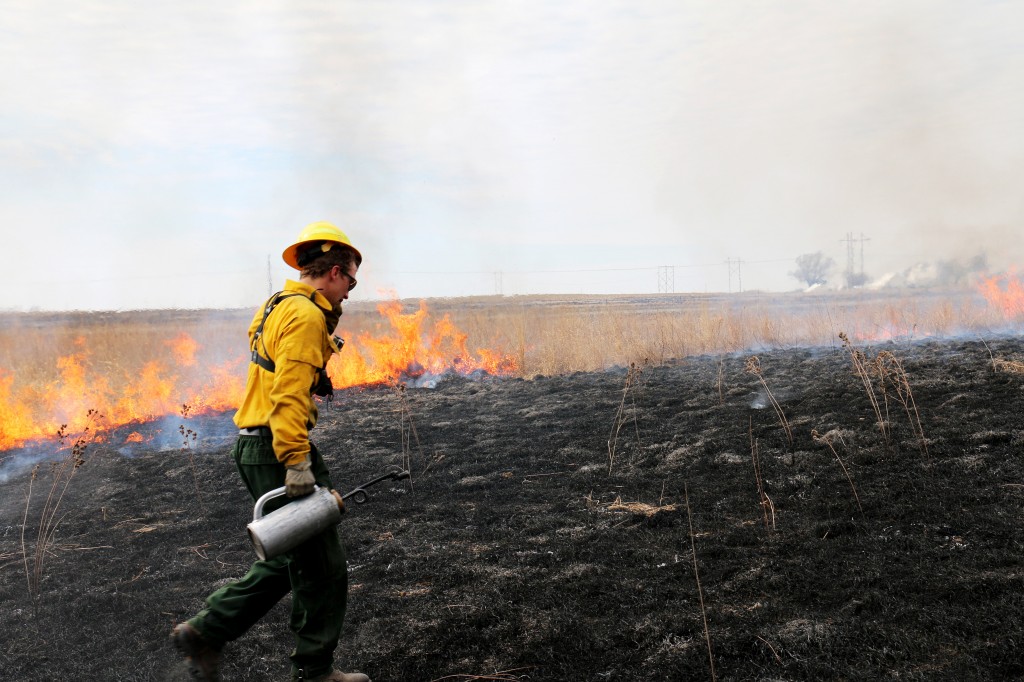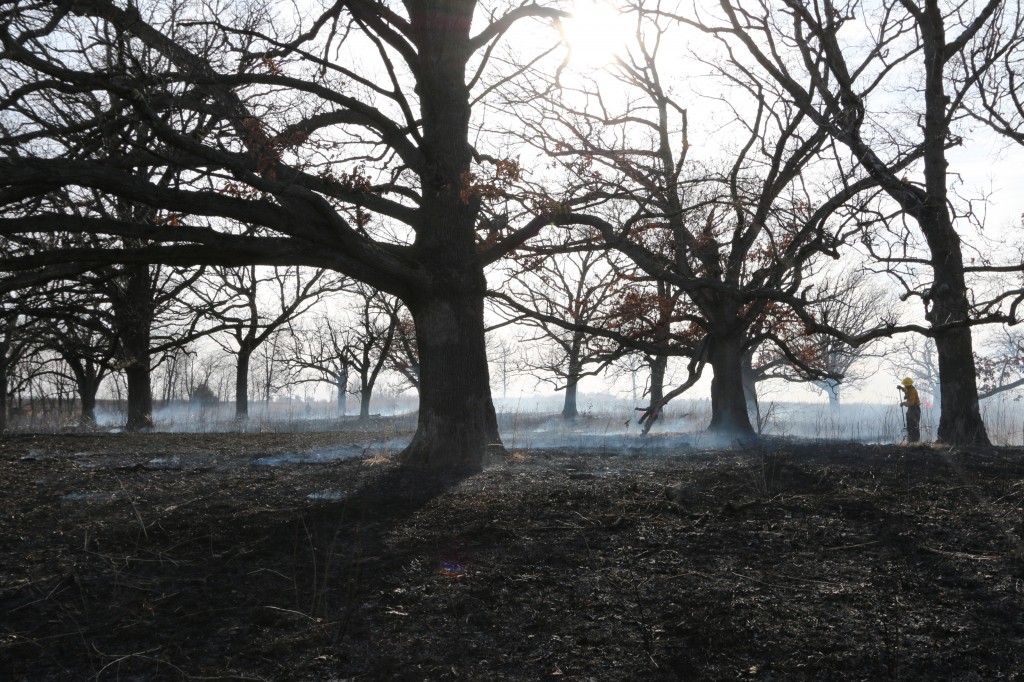The restorative powers of a prescribed burn: Part 1
By Catherine Wilson on April 2, 2015 in Blog

INHF Land Stewardship Specialist Ryan Schmidt carries a drip torch during a prescribed burn at Snyder Heritage Farm in Polk County.
Wild fires are an integral part of our natural landscape because they allow prairie grasses to renew and invigorate soil, according to Ryan Schmidt, INHF Land Stewardship Specialist.
Historically American Indians and Mother Earth's lightening shows took care of burn projects by turning vast prairie lands into dark, barren landscapes that allowed new, fertile spouts of grasses and wild flowers to emerge. The large-scale roar of ancient fires gave prairies and woodlands the time and space to repopulate as natural habitats and to naturally remove invasive species.
This year INHF staff members are tentatively planning 20-25 burns from March through May. Burns, covering areas smaller than an acre or plots larger than 200 acres, should be completed by mid-May.
The ecological restoration of oak savannas through prescribed burns also brings opportunities for growth from natural seed banks, according to Erin Van Waus, INHF Land Stewardship Director. She said oaks are tolerant of prairie fires and their naturally expansive canopy offer protection for the bottom layer of the savanna.

The INHF land stewardship staff checks over an oak savanna shortly after a prescribed burn at Snyder Heritage Farm in Polk County.
To picture a savanna, think of Little House on the Prairie's Pa Ingalls selecting a cool oasis of Bottle Brush and Big Bluestem grasses dotted with Columbines and Sweet William flowers and protected by a stand of majestic oak trees. Though the definition of an oak savanna is debatable, one resource says if more than one-half of the ground of a forested area is in the sun at noon in midsummer, the vegetation is a savanna. If the canopy has greater than 50-percent tree canopy coverage, the vegetation is a woodland or forest.
According to an article by Molly McGovern published in the Iowa Natural Heritage Magazine in Summer 2003, savannas were nearly eliminated in the Midwest within 50-80 years of European settlers arriving on the land as the trees were either cleared for plowing or logged for building.
Van Waus noted that a prairie burn is a two-part, interchangeable process. After staff members identify undesirable plants like Mulberry, Ironwood and Multiflora Rose that need to be eliminated, they can either remove the brush and invasive species from the area and then plan the burn or burn the area according to safety and ecological needs and then clear the brush of the unwanted plants.
Wind direction and velocity are important safety factors involved in orchestrating a prairie burn along with having humidity in a 30 percent to 45 percent range, according to Schmidt. Other concerns to keep in mind are reliable water sources, adjacent land, animals and building locations and, of course, crew members tuned into the overall structure of prairie burns.
Check back soon for Part 2 and see more pictures and video from our prescribed burn at Snyder Heritage Farm in Polk County.
